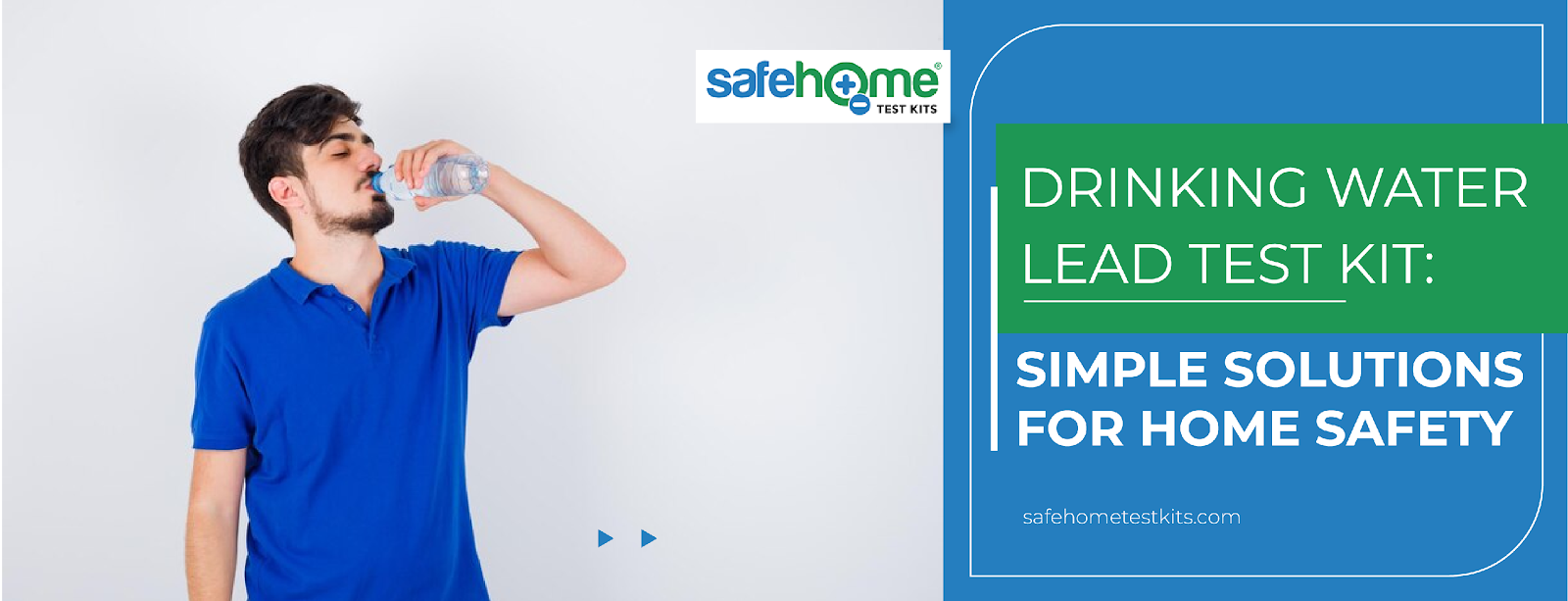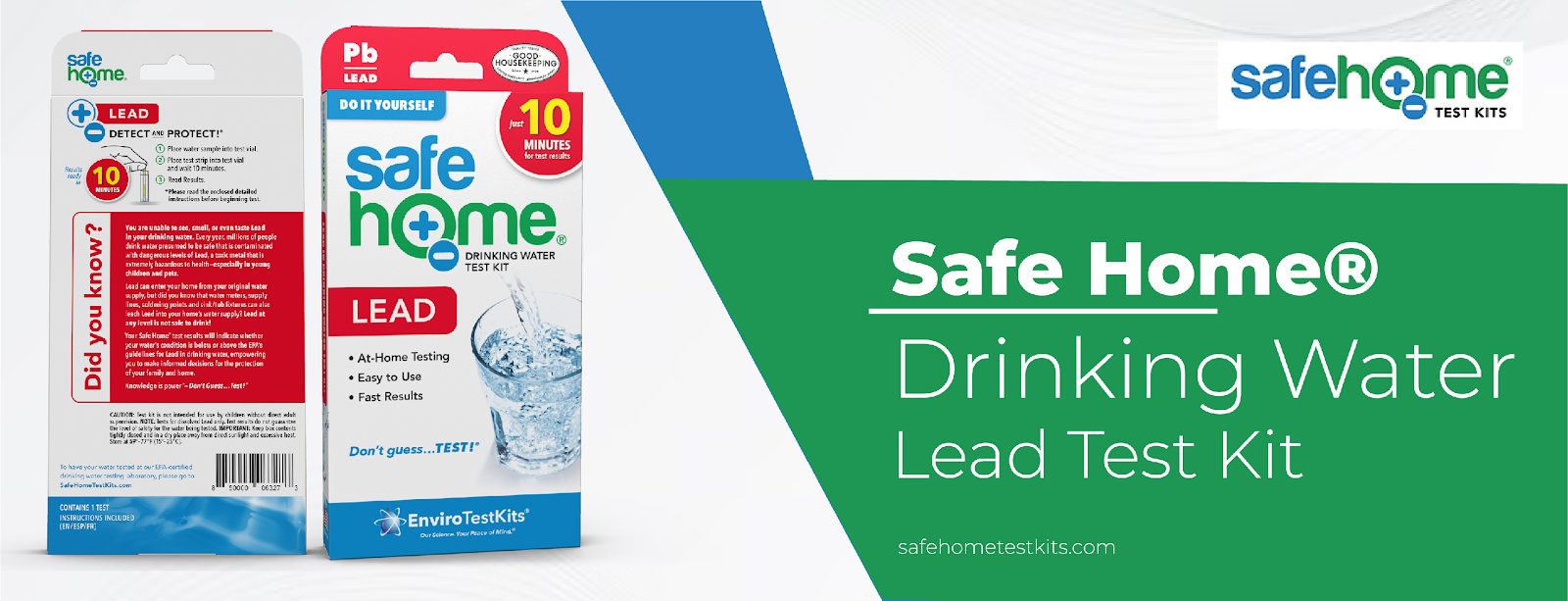Drinking Water Lead Test Kit: Simple Solutions for Home Safety

Ensuring the safety of one’s home is paramount for every individual and family. Home is not just a physical structure; it’s a sanctuary where we seek comfort, solace, and security. However, hidden dangers can compromise this sense of security amidst the pursuit of creating a haven. Therefore, addressing potential risks and implementing measures to safeguard against them is imperative. Using Safe Home® Drinking Water Lead Test Kit is compulsory now!
Home safety encompasses various aspects, including fire prevention, electrical safety, and beyond. Each component contributes to the overall well-being of inhabitants and visitors alike. It’s about physical injuries and protecting against unseen threats lurking in our living spaces.
Concerns About Lead Contamination in Drinking Water
- Lead contamination in drinking water has become a pressing concern in recent years due to its detrimental effects on human health.
- Lead, a toxic metal, poses significant risks to individuals, especially children, infants, and pregnant women.
- Various factors contribute to lead entering the water supply, including aging plumbing systems, lead-based solder, and corroded pipes.
The dangers of lead contamination in drinking water are multifaceted and can have far-reaching consequences for public health. Below are key points outlining the risks associated with lead exposure:
Toxicity of Lead:
- Lead is a highly toxic substance that can accumulate in the body over time.
- Even low levels of lead exposure can lead to adverse health effects, making it a significant public health concern.
Vulnerability of Children:
- Children are particularly susceptible to the harmful effects of lead exposure due to their developing bodies and behaviors.
- Lead exposure in children can result in cognitive impairment, learning disabilities, and behavioral problems.
- The developing nervous system in infants and young children is susceptible to lead toxicity, leading to long-term neurological damage.
Impact on Pregnant Women:
- Pregnant women are at increased risk of lead exposure as lead can pass from the mother to the fetus through the placenta.
- Lead exposure during pregnancy can lead to complications such as low birth weight, preterm birth, and developmental delays in infants.
Health Effects:
- Prolonged exposure to lead can cause a range of health issues, including damage to the brain, kidneys, and nervous system.
- Lead toxicity can result in cognitive deficits, behavioral disorders, and decreased IQ levels, particularly in children.
- Adults exposed to lead may experience hypertension, kidney damage, and reproductive problems.
No Safe Level of Exposure:
- Unlike some contaminants, there is no safe level of lead exposure.
- Even trace amounts of lead in drinking water can pose health risks, necessitating proactive measures to address contamination.
Long-Term Consequences:
- The effects of lead exposure can be long-lasting and irreversible, particularly when exposure occurs during critical periods of development.
- Addressing lead contamination requires immediate action, ongoing monitoring, and remediation efforts to protect public health.

Introduction to Safe Home® Drinking Water Lead Test Kit
In response to the growing awareness of lead contamination in drinking water, various solutions have emerged to help individuals assess and mitigate this risk. One such solution is the drinking water lead test kit. These kits provide a convenient and accessible way for homeowners to test tap water quality for lead contamination.
Drinking water lead test kits come in different forms, from simple test strips to more advanced colorimetric kits and laboratory analysis options. Regardless of the type, these kits are designed to detect the presence of lead in water quickly and accurately. By using these kits, homeowners can gain valuable insights into the safety of their drinking water and take appropriate action if lead contamination is detected.
In the following sections, we will delve deeper into the mechanics of lead test kits, exploring how they work, the different types available, and the factors to consider when choosing one. We will also discuss the steps to take if lead contamination is detected and provide tips for preventing such contamination in the first place. Ultimately, our goal is to equip readers with the knowledge and resources needed to protect their homes and loved ones from the dangers of lead contamination in drinking water.
Understanding Lead Contamination
Sources of Lead in Drinking Water
Lead contamination in drinking water can originate from various sources within the distribution system and household plumbing. Understanding these sources is essential for identifying potential sources of contamination and implementing appropriate mitigation strategies. Key sources of lead in drinking water include:
Old Plumbing Systems:
- Homes built before the 1980s are more likely to have lead pipes or lead-based solder in their plumbing systems.
- Over time, these pipes and solder can corrode, releasing lead particles into the water supply.
Lead Service Lines:
- Some older homes may still have lead service lines connecting them to the municipal water main.
- Corrosion of these service lines can introduce lead into the drinking water as it travels from the main to the household.
Brass Fixtures and Fittings:
- Brass fixtures like taps and valves may contain lead, particularly if manufactured before lead-free regulations were enforced.
- Water flowing through these fixtures can leach lead from the brass material, contaminating the water.
Galvanized Pipes:
- Galvanized pipes, which are steel pipes coated with zinc, may contain lead as an impurity.
- Corrosion of the zinc coating can expose the lead within the pipes, leading to lead contamination in the water.
Cross-Contamination:
- Lead can also enter the water supply through cross-contamination from other sources, such as lead-containing materials used in construction or industrial processes.
- Contaminated soil and groundwater can also contribute to lead contamination in drinking water.
Health Risks Associated with Lead Exposure
Exposure to lead, even at low levels, can have significant adverse effects on human health. Understanding the health risks associated with lead exposure is crucial for recognizing the importance of mitigating exposure and protecting public health. Key health risks associated with lead exposure include:
Neurological Effects:
- Lead exposure can impair cognitive function, leading to learning disabilities, decreased IQ levels, and behavioral problems, particularly in children.
- The developing nervous system in infants and young children is particularly vulnerable to the neurotoxic effects of lead.
Cardiovascular Effects:
- Lead exposure has been linked to hypertension (high blood pressure) in adults, increasing the risk of cardiovascular disease and stroke.
- Chronic exposure to lead can also lead to kidney damage and impaired renal function.
Reproductive Effects:
- Lead exposure can adversely affect reproductive health, leading to fertility issues, miscarriages, and developmental abnormalities in offspring.
- Pregnant women are at increased risk of lead exposure due to the potential transfer of lead from the mother to the fetus.
Developmental Effects:
- Lead exposure during critical periods of development can have long-lasting effects on neurological development and behavior.
- Children exposed to lead may experience delays in reaching developmental milestones and exhibit attention deficits and hyperactivity.
Other Health Effects:
- In addition to neurological and cardiovascular effects, lead exposure can also cause gastrointestinal symptoms, such as abdominal pain and constipation.
- Long-term exposure to lead may increase the risk of certain cancers, including kidney cancer and brain tumors.
Regulatory Standards and Guidelines
Regulatory standards and guidelines are crucial in protecting public health. They establish safe limits for lead in drinking water and prescribe measures to ensure compliance. Key regulatory bodies and standards governing lead contamination in drinking water include:
World Health Organization (WHO):
- The WHO sets international guidelines for drinking water quality, including maximum allowable lead concentrations, to protect public health.
European Union (EU) Regulations:
- The EU has established directives and regulations to ensure the safety and quality of drinking water, including limits on lead concentrations in tap water.
National Regulations:
- Many countries have national regulations and standards for lead in drinking water, enforced by governmental agencies responsible for public health and environmental protection.
- These regulations often include requirements for testing, monitoring, and remediation of lead contamination in drinking water systems.
Drinking Water Standards:
- Drinking water standards specify the maximum allowable concentration of lead in drinking water, typically expressed in micrograms per liter (µg/L) or parts per billion (ppb).
- Compliance with these standards is essential for ensuring the safety and quality of drinking water for consumers.

Steps to Take If Lead is Detected
Immediate Precautions to Protect Health
Upon detecting lead in drinking water, taking immediate steps to mitigate exposure and protect health is crucial. Below are the recommended precautions:
- Stop Drinking Tap Water: Immediately discontinue tap water for drinking, cooking, and preparing food.
- Use Alternative Water Sources: Switch to bottled water or water from a known safe source for drinking and cooking.
- Avoid Boiling Water: Boiling water does not remove lead and may even concentrate it further, so refrain from boiling tap water.
- Limit Exposure: Minimize skin contact with contaminated water while washing dishes.
- Provide Alternative Water Sources: Ensure that alternative water sources are readily available for household members, including children and pets.
- Seek Medical Advice: Consult a healthcare professional if you or your family members experience symptoms of lead exposure, such as abdominal pain, fatigue, or cognitive difficulties.
Our Safe Home® Drinking Water Lead Test Kit offers a user-friendly solution for quickly and accurately testing the presence of lead in your drinking water. With its high sensitivity, capable of detecting lead levels as low as 3.8 parts per billion (ppb), and the prestigious Good Housekeeping Seal, our product stands out as a reliable choice. In just 10 minutes, you can receive clear and visible results, allowing you to easily interpret whether your water is below or above the detection level.
Choose our Lead Home Test Kit for peace of mind and ensure the safety of your drinking water for yourself and your family.
Take action with our Safe Home® Drinking Water Lead Test Kit today!
Order yours now at this link: https://safehometestkits.com/product/diy-lead-in-water-test/
Questions? Reach out to us via email at info@safehometestkits.com or by phone at 888-932-6699.


